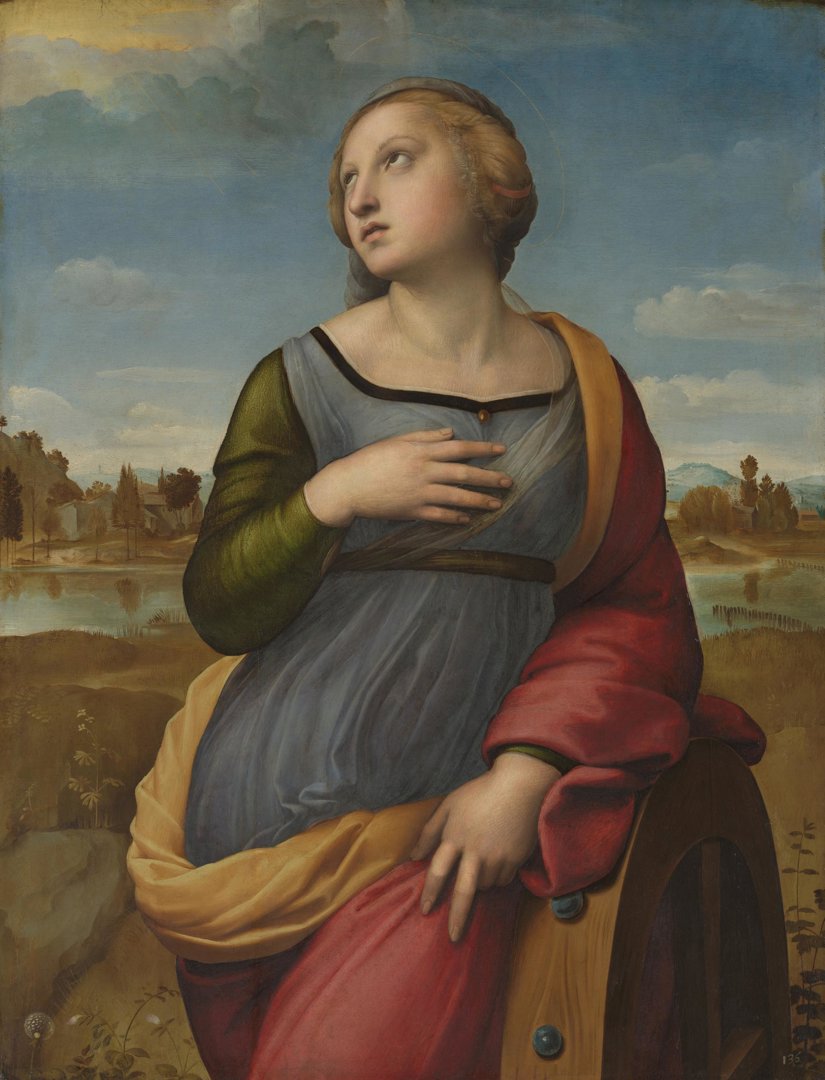Dates confirmed for the National Gallery's major Raphael exhibition
Issued June 2021
9 April – 31 July 2022
North Galleries
Admission charge
Members go free
The new dates for The Credit Suisse Exhibition: Raphael at the National Gallery have now been confirmed for 9 April – 31 July 2022.
Originally scheduled for October 2020, in the year that marked the 500th anniversary of Raphael’s death, the exhibition will be the first to explore the complete career of this giant of the Italian Renaissance.
A painter, draughtsman, architect, archaeologist, and poet who captured in his art the human and the divine, love, friendship, learning, and power, who gave us quintessential images of community and civilisation: Raphael’s life was short, his work prolific, and his legacy immortal.
In his brief career, spanning just two decades, Raffaello Santi (1483–1520) shaped the course of Western culture like few artists before or since. This exhibition will examine not just his celebrated paintings and drawings - but also his not so widely known work in architecture, archaeology, poetry, and design for sculpture, tapestry, prints, and the applied arts. The aim is to do something no previous Raphael exhibition has ever done - explore every aspect of his multimedia activity.
'The Credit Suisse Exhibition: Raphael' will demonstrate why Raphael plays such a pivotal role in the history of Western art, and seek to understand why his work remains relevant to us today. There will be more than ninety exhibits, with focus on autograph works and those in media he did not practice himself but for which he provided designs.
Loans from across his entire career – many of them unprecedented – will be travelling to London from around the world, to join 10 works from the National Gallery’s outstanding collection of the artist’s work. Lenders will include the Louvre, Paris, Musei Vaticani, Galleria degli Uffizi, Florence, National Gallery of Art, Washington DC, and the Museo Nacional del Prado, Madrid.
Work and activities that cannot be represented by original exhibits – such as the monumental frescoed rooms in the Vatican Palace, known as the Stanze of Raphael – will be presented in other innovative ways.
Notes to editors
For centuries Raphael has been recognised as the supreme High Renaissance painter, capturing visually our idea and ideals of the Renaissance.
Though he died at 37, Raphael's example as a paragon of Classicism dominated the academic tradition of European painting until the mid-19th century.
Raphael (Raffaello Santi) was born in Urbino where his father, Giovanni Santi, was court painter. He almost certainly began his training there and must have known works by Mantegna, Uccello, and Piero della Francesca from an early age. His earliest paintings were also greatly influenced by Perugino. From 1500 - when he was an independent master - to 1508 he worked throughout central Italy, particularly Florence, where he became a noted portraitist and painter of madonnas.
In 1508, at the age of 25, he was called to the court of Pope Julius II to help with the redecoration of the papal apartments. In Rome he evolved as a portraitist, and became one of the greatest of all history painters. He remained in Rome for the rest of his life and in 1514, on the death of Bramante, he was appointed architect in charge of St Peter's.
Image captions
Raphael, Saint Catherine of Alexandria, about 1507 © The National Gallery, London
Raphael, 'Study for the Head of an Apostle in the Transfiguration' © Private Collection
Pieter Coecke van Aelst, 'Vision of Ezekiel', about 1521 © Museo Nacional de Artes Decorativas. Madrid
The National Gallery is one of the greatest art galleries in the world. Founded by Parliament in 1824, the Gallery houses the nation’s collection of paintings in the Western European tradition from the late 13th to the early 20th century. The collection includes works by Bellini, Cézanne, Degas, Leonardo, Monet, Raphael, Rembrandt, Renoir, Rubens, Titian, Turner, Van Dyck, Van Gogh and Velázquez. The Gallery’s key objectives are to enhance the collection, care for the collection and provide the best possible access to visitors. Admission free. More at www.nationalgallery.org.uk
More information and book tickets for online events at nationalgallery.org.uk
Twitter @nationalgallery
Facebook @thenationalgallery
Instagram #nationalgallery
YouTube The National Gallery
Features and film are at nationalgallery.org.uk/stories
National Gallery Membership is the best way to support the work of the Gallery. Not only does each Member enjoy access to all the Gallery has to offer, but also year-long free entry to exhibitions, priority booking and exclusive events online and in-Gallery. www.nationalgallery.org.uk/membership
Press enquiries
National Gallery Press Office email press@ng-london.org.uk
Publicity images can be obtained from https://press.nationalgallery.org.uk/

